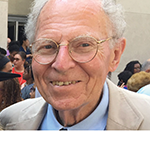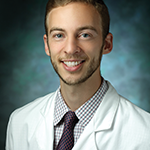
Dr. Plotz
Rheumatologists who are outstanding clinicians, provide consistently exceptional care to patients and serve as role models for colleagues and trainees are in the spotlight in our Lessons from a Master Clinician series. Here, we offer insights from clinicians who have achieved a level of distinction in the field of rheumatology.
Paul Plotz, MD, is scientist emeritus of the National Institutes of Health (NIH) and served as chief, scientific director and deputy director of the Arthritis and Rheumatism Branch of the National Institute of Arthritis and Musculoskeletal and Skin Diseases (NIAMS). He was also appointed as a senior advisor to Deputy Director for Intramural Research Michael Gottesman. Dr. Plotz worked at the NIH for 40 years, with the exception of two years when he did basic research in immunology at the National Institute for Medical Research at Mill Hill, London.
Dr. Plotz’s early work was largely in immunology. He studied the biology of immune complexes in patients, animals and in vitro with stable model immune complexes using affinity labeling polymeric antigens that he invented.
He has published extensively and lectured widely, and his awards include being named a Master of the American College of Physicians.
TR: What are the characteristics of a master clinician?
Dr. Plotz: The master clinician should:
- Pay attention to every detail of the patient’s history and to additional details that the house staff and senior staff have uncovered;
- Listen without interrupting;
- Ask questions not presented by the attending staff; and
- Focus on critical details and bring out the knowledge of the disease path that those details suggest.
Here, for example, are some instances from my own experience:
A patient was presented as having pernicious anemia, but he could stand on one foot without falling, which made the diagnosis of pernicious anemia highly unlikely.
In another case, a patient of A. Stone Freedberg, MD, presented with a density in his chest X-ray. Dr. Freedberg noted the patient had very dirty nails and fingers and that when he coughed he held his hand to his open mouth. From this, Dr. Freedberg inferred the lung density was caused by aspiration of dirt from the patient’s hand, as verified by a lung biopsy.
TR: What qualities distinguish the master clinician as a role model?
Dr. Plotz: The master clinician:
- Asks questions;
- Exhibits warmth toward the patient. Here I must relate my own experience of watching John Decker, MD, sit on a patient’s bed and touch the patient, seemingly inconsequently, and feeling and identifying a calf abscess.
- Uncovers details, historical or physical, even something like tears in the eyes of a patient, even details of accent or grammar;
- Is aware of respected norms;
- Always checks and rechecks diagnostic tests, such as X-rays and the neurological exam;
- Continuously grows in knowledge by taking all opportunities to listen to great diagnosticians (e.g., Raymond Adams, MD). Here I must cite my own obligation to such great Beth Israel, [Boston], master physicians as Dr. Freedberg and Paul Zoll, MD; and
- Avoids criticizing colleagues at the bedside, especially younger colleagues, students and house staff.
TR: Indeed, Dr. Freedberg, the former chair of cardiology at Beth Israel Hospital, had a lasting impact on Dr. Plotz and inspired many other students and clinicians as a phenomenal teacher and diagnostician. In 2009, The New York Times Magazine memorialized Dr. Freedberg at the time of his passing with the following description of what made him so special:
“As a doctor, Freedberg took extensive histories of patients that included not just physical details but also existential ones. What were their worries? Their anxieties? He stressed that exams should begin the instant patients walk through the door. How do they compose themselves? How do they walk and sit down? To Freedberg, every ache was a mystery to be solved, every piece of information a possible clue.
‘[Paul showed me] what I could do with what I had trained to do—apply basic research tools, one by one.’ —Cornelius Boerkoel, MD, PhD
He was a man of science but also believed that good doctors had therapeutic powers that transcended making diagnoses and suggesting treatments. He loved the story of Ambroise Paré, a 16th-century French surgeon whose mere presence on the battlefield is said to have diminished the pain of wounded soldiers—and he was convinced the tale wasn’t apocryphal. Most of all, as Freedberg saw it, doctors had a duty to help guide their patients through death. He spoke openly with the terminally ill about their fears, sat with many patients during their final weeks …”
What Others Say about Dr. Plotz
In a similar fashion, Dr. Plotz was honored by his colleagues at a 2011 symposium honoring his work at the NIH.
Richard Siegel, MD, PhD, former chief of the Autoimmunity Branch of NIAMS, had this to say about Dr. Plotz: “Dr. Plotz was my Sarastro when I came to NIH. He was an oasis of calm in an ocean of chaos, guiding me through the tenure track.”
Walter Reich, MD, along with Dr. Plotz, co-chairs the Committee of Concerned Scientists, an independent, international organization devoted to the protection and advancement of human rights and scientific freedom of scientists, physicians and scholars. Dr. Reich noted the committee “is a part of Paul’s life that explains so much else about what he has done, including his vocation in medicine—and how it could not be otherwise.” He referenced Dr. Plotz’s work helping Soviet refusenik scientists emigrate to the U.S. in the mid-1980s and his work in the 1960s with the U.S. Public Health Service investigating Southern hospitals suspected of segregating patients.
Cornelius Boerkoel, MD, PhD, director of the NIH’s Undiagnosed Diseases Program’s Translational Research Laboratory, shared the following regarding Dr. Plotz: “In many ways, Paul rescued my career in medicine. I had patients in front of me who needed a solution. I had been trained to use basic science tools, but the way the system worked was, you collected a cohort, … you built a mouse model, and then, maybe in five decades, you could make a difference to that person you saw. [Paul showed me] what I could do with what I had trained to do—apply basic research tools, one by one.”
 Jason Liebowitz, MD, completed his fellowship in rheumatology at Johns Hopkins University, Baltimore, where he also earned his MD. He is currently in practice with Arthritis, Rheumatic, and Back Disease Associates, New Jersey.
Jason Liebowitz, MD, completed his fellowship in rheumatology at Johns Hopkins University, Baltimore, where he also earned his MD. He is currently in practice with Arthritis, Rheumatic, and Back Disease Associates, New Jersey.